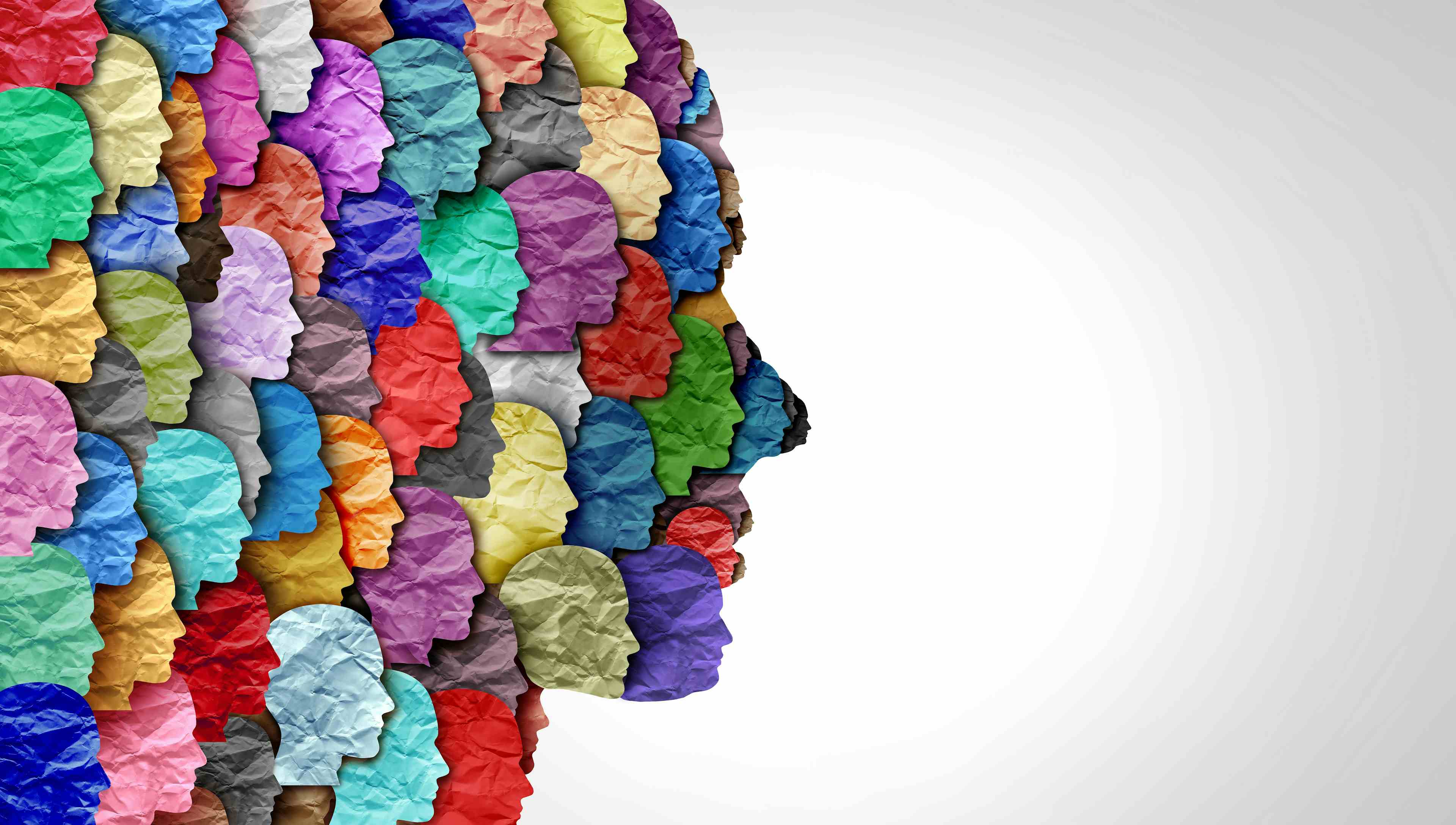News
Article
Special Considerations in Treating Women With Schizophrenia
Author(s):
How does schizophrenia differ between men and women, and what does this mean for developing treatment strategies?
Photographee.eu_AdobeStock

Several aspects of schizophrenia differ considerably between men and women and influence treatment strategies. The most important differentiating factors are the age of onset, symptom differences, response to antipsychotic medications, parenting responsibilities, and care during the menopausal transition.
Age of Onset and Differences in Symptoms
The first occurrence of the symptoms and behaviors that conform with the currently accepted definition of schizophrenia occur, on average, several years earlier in men than they do in women.1 The older age of onset found in women is partially explained by the fact that many large studies include a wide range of ages, sometimes extending into older age.
In women, a second peak of schizophrenia onset occurs around the time of menopause,2 which has been attributed to the decline of estrogen levels as menopause approaches.3 This hypothesis is consistent with the observation that schizophrenia symptoms can be exacerbated during other times of estrogen withdrawal not only at perimenopause,4 but also postpartum5 and during the premenstrual phase of the menstrual cycle.6
It has been suggested that the onset of psychotic symptoms in middle-aged women may have a different etiology than onset that occurs in young adulthood. One hypothesis is that a first episode in middle age predominantly relates to the social stressors that women experience at this time (Table).7
Table. Social Stressors Women Experience That May Contribute to the Onset of Psychotic Symptoms in Middle Age7

Women with schizophrenia tend to be more socially adept than their male peers, perhaps because they socially mature earlier than men and because their psychotic symptoms often begin at a later age.8 Thus, the adolescent presentation of schizophrenia in women may be less clinically obvious because women can mask early schizophrenia with appropriate affect and relatively easy therapeutic engagement.
The flat affect and negative symptoms that characterize men with schizophrenia may not be present in women.9 Moreover, women with schizophrenia usually have fewer cognitive symptoms than men.10
For these reasons, it is easier to attribute symptoms such as delusions and hallucinations in these young women to depression, anxiety, posttraumatic stress disorder, dissociation, and even eating disorders. Thus, women with schizophrenia are often misdiagnosed early in the course of their illness. In contrast, the main differential diagnosis in young men presenting with psychotic symptoms is substance use.11
This means that adolescent schizophrenia is often diagnosed late in women, both because it is not expected and because the first presentation may not meet textbook specifications.
Finally, a distinguishing presentation in women with schizophrenia is that symptoms often fluctuate, corresponding to the ups and downs of estrogen levels across the menstrual cycle.12,13
Response to Antipsychotic Medications
Women with schizophrenia find it easier than their male peers to form therapeutic alliances with their clinicians,14 and, perhaps for this reason, tend to respond to cognitive-behavioral, psychotherapeutic, and pharmacologic treatments more robustly than men.15
Differences in antipsychotic medication effects between men and women are frequently reported for several reasons. Body build usually differs in height and in lipid storage, both of which are important for drug distribution.16
The amount of therapeutic drug that reaches the relevant neurotransmitter receptors in the brain depends on a number of factors (absorption, distribution, metabolism, elimination, protein binding, blood flow to the brain), but, in sum, at comparable oral doses, more of the drug reaches targets in the brain in women than it does in men.15 This varies somewhat depending on the specific drug and whether the enzymes responsible for the drug’s breakdown are affected by estrogen levels.17
The overall effect of differences between men and women in body habitus and metabolism is that women respond to lower doses of antipsychotic medications.
On the other hand, when receiving the same doses as men, women develop more adverse effects. Metabolic effects (leading to type 2 diabetes), cardiac effects (torsade de pointes), hyperprolactinemia effects (hirsutism and acne, osteoporosis, breast cancer), and tardive dyskinesia are important potential adverse effects that are seen more commonly in women than in men.18
Parenting Responsibilities
Many women with schizophrenia want to be mothers, but many do not. Discussions about this issue are important because those who do not want children need contraceptive advice and reminders, while those who want children need psychoeducation, social skills training, and preparation for pregnancy and motherhood.19
Clinicians can help female patients with schizophrenia to plan pregnancy in a few different ways. They need to address smoking and substance abuse, advising their patients to gradually wean themselves off prior to conception.20 Discussions with patients and their partners should also include the pros and cons of antipsychotic medication use during pregnancy, as well as the risks of untreated psychiatric illness to the mother, the pregnancy, and the exposed infant.
Clinicians need also to refer their patients to obstetrics/gynecology, monitor their prenatal care, and carefully titrate all medications over the course of the stages of pregnancy in order to maintain the patient’s psychiatric well-being.21
Family support is essential at this time. When the patient is in a relationship, meeting with the couple is essential. Domestic abuse is sometimes triggered by pregnancy.22 When patients are living in supported housing, new and child-appropriate living and financial arrangements are often necessary, and, because the postpartum period is a time of risk for psychotic relapse in schizophrenia,23 home visits by members of the therapeutic team are necessary.
Antipsychotic doses are usually kept low during late pregnancy, but they need to be increased after delivery when estrogen levels sharply fall and when symptoms can increase in severity. Breastfeeding may or may not be the best course for mother and child, depending on the mother’s wishes and their support system, so this decision should be made with careful consideration.24
Although fewer than a third of men with schizophrenia become fathers (this varies according to country and culture), approximately 50% of women with schizophrenia are mothers, which is roughly the same percentage as in the general population.25 In many cases, women raise their children on their own, and, even when women are partnered, the responsibilities of parenthood lie primarily with mothers.
Because of disability, women with schizophrenia are too often economically disadvantaged, live in poor neighborhoods, eat poorly, sleep poorly, have no childcare, and enjoy relatively little family support. Some women with this disorder believe that, due to their diagnosis, they risk losing custody of their children. Because of this belief, they mistakenly think that if they stop taking medication, they will no longer be viewed as psychiatrically ill—a decision that can prove disastrous.26
Mothers with schizophrenia need therapeutic support at home when young children make mental health visits difficult. Inexperienced mothers need support, parental education, and financial assistance. Family therapy to maintain as much familial engagement as possible is also needed. The well-being of children should come first, which means that childcare workers are ideally included in the therapeutic team. Should mothers require hospitalization, temporary surrogate parenting plans should be in place.26
The Menopausal Transition
Women’s transition to menopause—known as perimenopause, which tends to begin approximately at age 40 years—can occur early in women with schizophrenia because most antipsychotic medications raise prolactin levels and, consequently, suppress ovarian production of estrogen. Low estrogen levels can be associated with acne, hirsutism, and weight gain, affecting physical appearance; cause vaginal dryness and lower sexual libido; and predispose to osteoporosis.
Perimenopause is also associated with hot flashes, night sweats, and insomnia. At the same time, women at this stage of life often experience psychological concerns and psychosocial stressors, which can trigger symptomatic relapse.27
In addition, antipsychotic medications that are metabolized by enzymes that are sensitive to estrogen levels may lose their effectivenessat this time.6 In turn, if the dosage of an antipsychotic is increased, adverse effects can increase. A switch to intramuscular long-acting medication has been recommended; a series of family meetings in order to reduce stress levels is advisable as well.
Medical issues such as sleep apnea, breast cancer, cardiovascular and respiratory problems, osteoporosis, and osteoarthritis may emerge at this age and ideally should be addressed early.28
A Note About Suicide
As in the general population, women with schizophrenia, as a group, suffer more from depression than do men with the same diagnosis, but men with schizophrenia commit suicide much more frequently. However, it must be remembered that, when it comes to schizophrenia, the proportion of women vs men who complete suicide is significantly larger than that ratio in the general population.
Women as well as men with schizophrenia are at considerable risk for suicide. Suicidal thoughts should be identified and monitored, and patients must be reassured that, should they feel desperate, a team member will always be available.29
Concluding Thoughts
To summarize this report on treatment needs in women with schizophrenia, the emphasis has been on strategic approaches for women patients and how these may differ from the ones routinely used with men. It must be remembered, however, that women are individuals, each of whom has her own history and her own needs. As Sir William Osler taught, “It is important to care more particularly for the individual patient than for the special features of the disease.”30
Dr Seeman is professor emerita in the Department of Psychiatry at the University of Toronto in Toronto, Ontario, Canada.
References
1. Häfner H. From onset and prodromal stage to a life-long course of schizophrenia and its symptom dimensions: how sex, age, and other risk factors influence incidence and course of illness. Psychiatry J. 2019;2019:9804836.
2. Selvendra A, Toh WL, Neill E, et al. Age of onset by sex in schizophrenia: proximal and distal characteristics. J Psychiatr Res. 2022;151:454-460.
3. Brand BA, de Boer JN, Sommer IEC. Estrogens in schizophrenia: progress, current challenges and opportunities. Curr Opin Psychiatry. 2021;34(3):228-237.
4. Sommer IE, Brand BA, Gangadin S, et al. Women with schizophrenia-spectrum disorders after menopause: a vulnerable group for relapse. Schizophr Bull. 2023;49(1):136-143.
5. Perry A, Gordon-Smith K, Jones L, Jones I. Phenomenology, epidemiology and aetiology of postpartum psychosis: a review. Brain Sci. 2021;11(1):47.
6. Reilly TJ, Sagnay de la Bastida VC, Joyce DW, et al. Exacerbation of psychosis during the perimenstrual phase of the menstrual cycle: systematic review and meta-analysis. Schizophr Bull. 2020;46(1):78-90.
7. González-Rodríguez A, Guàrdia A, Monreal JA. Peri- and post-menopausal women with schizophrenia and related disorders are a population with specific needs: a narrative review of current theories. J Pers Med. 2021;11(9):849.
8. Rochat MJ. Sex and gender differences in the development of empathy. J Neurosci Res. 2023;101(5):718-729.
9. Malaspina D, Walsh-Messinger J, Gaebel W, et al. Negative symptoms, past and present: a historical perspective and moving to DSM-5. Eur Neuropsychopharmacol. 2014;24(5):710-724.
10. Zhao N, Wang XH, Kang CY, et al. Sex differences in association between cognitive impairment and clinical correlates in Chinese patients with first-episode drug-naïve schizophrenia. Ann Gen Psychiatry. 2021;20(1):26.
11. Irving J, Colling C, Shetty H, et al. Gender differences in clinical presentation and illicit substance use during first episode psychosis: a natural language processing, electronic case register study. BMJ Open. 2021;11(4):e042949.
12. Brzezinski-Sinai NA, Brzezinski A. Schizophrenia and sex hormones: what is the link? Front Psychiatry. 2020;11:693.
13. Seeman MV. Menstrual exacerbation of schizophrenia symptoms. Acta Psychiatr Scand. 2012;125(5):363-371.
14. Browne J, Bass E, Mueser KT, et al. Client predictors of the therapeutic alliance in individual resiliency training for first episode psychosis. Schizophr Res. 2019;204:375-380.
15. Li R, Ma X, Wang G, Yang J, Wang C. Why sex differences in schizophrenia? J Transl Neurosci (Beijing). 2016;1(1):37-42.
16. Seeman MV. Antipsychotic-induced somnolence in mothers with schizophrenia. Psychiatr Q. 2012;83(1):83-89.
17. Seeman MV. The pharmacodynamics of antipsychotic drugs in women and men. Front Psychiatry. 2021;12:650904.
18. Brand BA, Haveman YRA, de Beer F, et al . Antipsychotic medication for women with schizophrenia spectrum disorders. Psychol Med. 2022;52(4):649-663.
19. Schonewille NN, van den Eijnden MJM, Jonkman NH, et al. Experiences with family planning amongst persons with mental health problems: a nationwide patient survey. Int J Environ Res Public Health. 2023;20(4):3070.
20. Azenkot T, Dove MS, Fan C, et al. Tobacco and cannabis use during and after pregnancy in California. Matern Child Health J. 2023;27(1):21-28.
21. Seeman MV. Clinical interventions for women with schizophrenia: pregnancy. Acta Psychiatr Scand. 2013;127(1):12-22.
22. Wilson CA. Mitigating the increased risk of domestic abuse among people with mental illness: challenges and opportunities of the COVID-19 pandemic. BJPsych Advances. 2022;28(5):328-329.
23. Taylor CL, Stewart RJ, Howard LM. Relapse in the first three months postpartum in women with history of serious mental illness. Schizophr Res. 2019;204:46-54.
24. Breadon C, Kulkarni J. An update on medication management of women with schizophrenia in pregnancy. Expert Opin Pharmacother. 2019;20(11):1365-1376.
25. Radley J, Barlow J, Johns LC. Sociodemographic characteristics associated with parenthood amongst patients with a psychotic diagnosis: a cross-sectional study using patient clinical records. Soc Psychiatry Psychiatr Epidemiol. 2022;57(9):1897-1906.
26. Seeman MV. Intervention to prevent child custody loss in mothers with schizophrenia. Schizophr Res Treatment. 2012;2012:796763.
27. González-Rodríguez A, Monreal JA, Seeman MV. The effect of menopause on antipsychotic response. Brain Sci. 2022;12(10):1342.
28. Solomon HV, Sinopoli M, DeLisi LE. Ageing with schizophrenia: an update. Curr Opin Psychiatry. 2021;34(3):266-274.
29. Sommer IE, Tiihonen J, van Mourik A, et al. The clinical course of schizophrenia in women and men - a nation-wide cohort study. NPJ Schizophr. 2020;6(1):12.
30. Osler W. Aequanimitas, With Other Addresses to Medical Students, Nurses and Practitioners of Medicine. Blakiston’s Son & Co; 1905.















